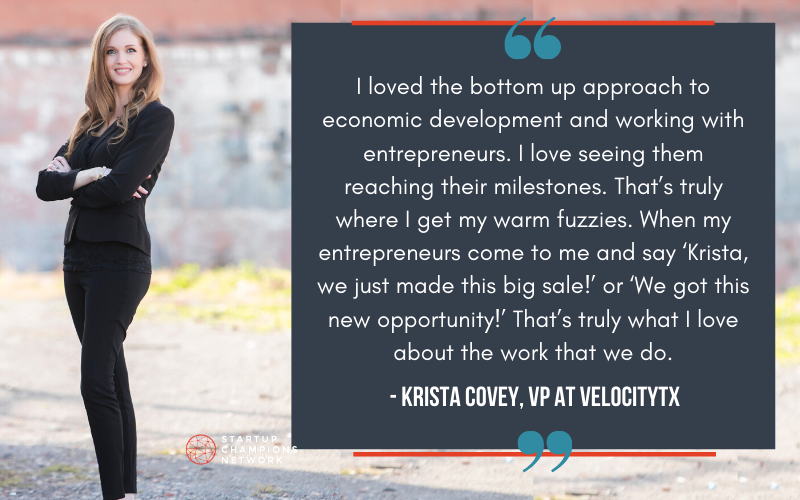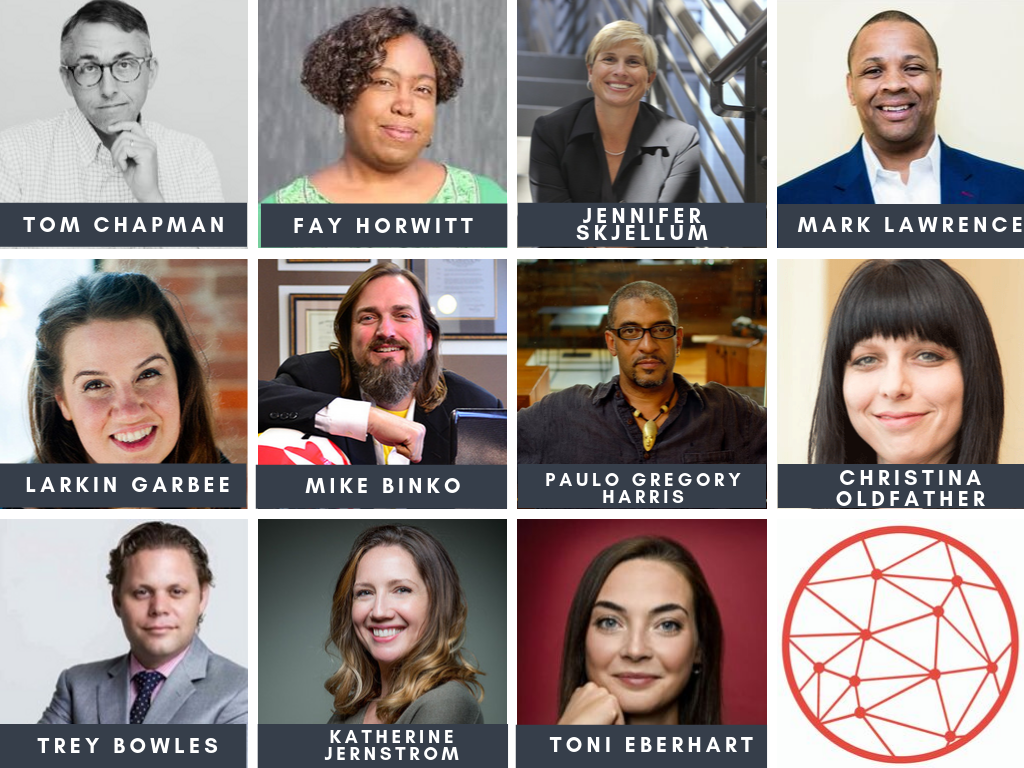#EcosystemsRecover: How Puerto Rico Has Recovered and Restarted After Multiple Disasters
“We are strong. We are going to survive. I don’t know how long it’s going to take us to restart the economy or how many companies we are going to lose again. We’re going to do it anyhow. In the end, entrepreneurs are strong. We will survive.”
These words were uttered after a long, emotional pause during an interview with Carlos Jiménez, an ecosystem builder in Puerto Rico. Let those words sink in. Because they ring true in every ecosystem across the United States. This is the first story in a series of stories around resiliency we’re calling #EcosystemsRecover.
Carlos Jiménez is the Co-Founder of the Young Entrepreneurship Education System (YEES). YEES has been teaching young people about entrepreneurship since 2001 using tools and methodologies developed in house. YEES helps young entrepreneurs develop their business skills through educational projects, courses, materials and digital tools. They have taught over 40,000 participants in more than 800,000 hours of direct contact.
The co-founders of Yees ready to receive 500 + students from the Robot Makers project from the Department of Economic Development and Trade of Puerto Rico.
Around the same time Carlos was growing the YEES organization, there was a study done by Babson University around the low entrepreneurship rate in Puerto Rico.
“That’s when we started to talk about the entrepreneurial ecosystem here,” says Carlos. “We started getting together to talk about entrepreneurship and doing things together in a collaborative way.”
By we he means his organization along with about six other Entrepreneurship Support Organizations (ESOs) on the island. Because of those conversations, the number of ESOs has grown significantly.
“Today, we have 150 - 200 organizations doing the work,” says Carlos.
Despite the large number of ESOs in Puerto Rico, they still have a very low rate of entrepreneurship. But if you look beyond the rankings and consider the island’s history over the last 20 years, you’ll see that their ecosystem has been through a lot of trauma since those ESOs came together. The story that shines through - that we can all learn from - is one of resilience and survival because of the work of their ecosystem builders.
Puerto Rico’s Long History Stopping and Starting the Economy
We are about to experience what it’s like to restart our economies after a crisis. But Puerto Rico has actually been through this before. The island has been in an economic downturn for the past 13 years and in 2017 they became the first U.S. entity to file for bankruptcy. Between 1990 and 2001, Puerto Rico’s economy was adding jobs at the same pace as the rest of the U.S. But in 2007, U.S. corporations on the island had a mass exodus after the repeal of a controversial tax break law that allowed U.S. manufacturing companies to avoid corporate income taxes on profits made in U.S. territories. This was a huge blow to the local economy in Puerto Rico but they dug in and looked at ways to recover. Programs were developed, and the ecosystem began rebuilding.
In 2017, Hurricanes Irma and Maria came through two weeks apart. The Category 5 hurricanes decimated Puerto Rico and left hundreds of thousands of people homeless and without power, with 95% of the island’s cell networks severed. While 40% of Puerto Ricans reported losing their jobs due to the storm, many small businesses survived. According to NBC, roughly 36,000 out of Puerto Rico's nearly 44,000 small employers were able to resume operations within a year.
On December 31, 2019, Puerto Rico was once again faced with a natural disaster. This time, from hundreds of earthquakes and aftershocks in the southern part of the island that left thousands in shelters and nearly a million without power. Puerto Rico is still waiting on billions in federal funds from the $91 billion promised after the 2017 hurricanes. Now, the island is facing the effects of the COVID-19 pandemic as every resident on the island has been ordered to shelter in place.
In order to survive, you must collaborate
Despite multiple set-backs, the ecosystem is surviving because of the collaboration that has happened among ecosystem builders on the island. Ecosystem builders have the unique ability to think quickly on their feet, to know the players and strengths in the ecosystem, and to connect them to each other to get things done. The ecosystem builders in Puerto Rico have had so much practice collaborating on crisis response, Carlos says they are now “more organized than ever.”
“We were really fast at helping the companies and entrepreneurs. The first thing we did after the hurricanes was call into our friendly people in the states and ask them for electric generators. We took those electric generators to companies that didn’t have any. We did a lot of that kind of stuff.”
Because Carlos and his fellow ecosystem builders have mapped their ecosystem, they are able to be a source for connections and resources. Carlos specifically has been able to connect businesses who need inventory with those who have inventory to share. He’s also connected seamstress professionals who were out of work with major pharma supply distributors looking to distribute masks to those in need.
He has also connected entrepreneurs with distributors who are in need of supplies and brokered a deal to offer them the money up front for materials so that they can make needed supplies like hand sanitizers that they will then sell to the distributor.
“We’ve been focused on getting the market together. The distributors didn’t have any companies distributing to them from the states or from China and now they are buying from locals. Same thing with agricultural products. We have opened the doors to other food distributors who were so small that supermarkets didn’t buy from them.”
Now, because food is not getting in from other places, they’ve seized the opportunity to push for local to local support.
The ESOs have also had success working with their government. They brought their ideas for how to support entrepreneurs to the economic development department and some of the ideas have already been implemented. Some of the things they have done so far include:
Starting an emergency fund from the local government bank, which was closing.
Virtual workshops to help small and medium businesses digitize their inventories.
Creating an alliance with the Brands of Puerto Rico, a small company fulfillment center, to help other small companies distribute to them so they can distribute elsewhere.
Speeding up the payment process for local suppliers.
Carlos has been particularly focused on helping small business manufacturers on the island. He has a great relationship with Toyota from a previous business he ran and has been teaching businesses on the island “The Toyota Way” - which is based on lean manufacturing principles.
As you can see, despite the multiple setbacks to the economy, the ecosystem continues to grow and get stronger. After each crisis, it has recovered and matured in the process.
“We still don’t have the numbers. I know we will get there somewhere in the future. Right now, we have rethink everything we have done. Nothing is going to be the same. We know that. Everything has to be newly rebuilt. Redone. Reset. We are resetting so often that I think now it’s part of the way,” Carlos says. He adds, “We’ve been so damaged already I don’t know that you can be more damaged than this.”
Advice from a fellow ecosystem builder
As you can see, Carlos is fully experienced in what it’s like to recover. Here is some advice he’d like to share with fellow ecosystem builders doing the work.
1. Don’t lose sight of what you’re doing. Focus on helping other organizations and supporting entrepreneurs.
2. Be a connector and encourage businesses in the ecosystem to work together.
“That’s essential,” Carlos says. “You have to be a connector in these times.”
3. Create a list of the resources available. After the first natural disaster struck, the ESOs in Puerto Rico mapped the ecosystem so that there was one, centralized resource with programs, support organizations, grants, etc. In addition to that, they have also created a list of things that are relevant now.
“We created a list of everything that’s going on from funding to conferences to different things that everyone is doing. [...] If someone calls and asks for resources, this is what we send.”
4. Share stories. Call other ecosystem builders to see what they’re doing and offer to share your successes and struggles.
“This is part of it. [Meaning the very call we were on] This is entrepreneurial ecosystem building. Just calling to see what we’re doing and sharing what others are doing is helpful,” Carlos says.






























![[Photo credit Launch SA - #SAEW Mentor Rounds Event]](https://images.squarespace-cdn.com/content/v1/563e3a5ae4b0b9b1d011b6c2/1581514218449-9MJA87M3LNDAZMI2S71C/62339627_2265679913539109_2513849795777396736_o.jpg)






















